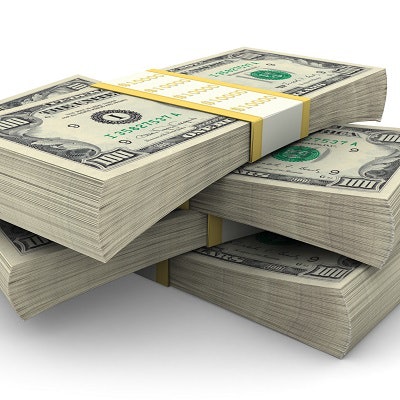
Radiology practices are still trying to understand all the implications of the payment sent automatically on April 10 by the U.S. Department of Health and Human Services (HHS). Our recent article outlined the program, but many questions remain.
 Rebecca Farrington from Healthcare Administrative Partners.
Rebecca Farrington from Healthcare Administrative Partners.For example, some practices thought that the deposit was the result of their application for the Accelerated and Advance Payment Program that is available through the U.S. Centers for Medicare and Medicaid Services (CMS). However, the April 10 electronic deposit labeled HHSPAYMENT is completely separate from that program. It was an automatic payment out of the $100 billion fund authorized by the Coronavirus Aid, Relief, and Economic Security (CARES) Act.
Practices that normally receive their Medicare reimbursements by paper check will also receive this grant fund payment by check. The payments will go to large health systems as well as to solo physicians based on the taxpayer identification number (TIN) that was used to submit claims to Medicare in 2019. Physicians in a group practice will see their funds remitted to the group rather than as payments to the individual.
According to the information provided on the HHS website, these grant payments will not need to be repaid. However, action is required by the practice. Within 30 days of receiving the payment, an attestation must be signed confirming receipt and agreeing to the terms and conditions of the payment. A web portal for signing the attestation will be open the week of April 13, and a link will be announced by HHS. The practice will have to submit quarterly reports that will be defined later related to the use of the funds.
Among many other things, the conditions of receiving the payment include certification of the following:
- The recipient billed Medicare in 2019; provides or provided after January 31, 2020, diagnoses, testing, or care for individuals with possible or actual cases of COVID-19; is not currently terminated from participation in Medicare; is not currently excluded from participation in Medicare, Medicaid, and other federal healthcare programs; and does not currently have Medicare billing privileges revoked.
- The payment will only be used to prevent, prepare for, and respond to the novel coronavirus, and it shall reimburse the recipient only for healthcare-related expenses or lost revenues that are attributable to the novel coronavirus.
- The recipient will not use the payment to reimburse expenses or losses that have been reimbursed from other sources or that other sources are obligated to reimburse.
Another condition of receiving these funds is that providers must agree not to seek collection of out-of-pocket payments from a patient with COVID-19 that are greater than what the patient would have otherwise been required to pay if the care had been provided by an in-network provider.
Radiology practices might wonder if they qualify to keep this stimulus money, since they do not "provide diagnoses, testing, or care for individuals with possible or actual cases of COVID-19," as one of the certification statements requires. However, many practices are reading diagnostic exams such as chest x-rays or CT scans for patients with possible COVID-19, and this would seem to meet that requirement. The statement issued by HHS also contains the following, which seems to obviate any question of eligibility:
"If you ceased operation as a result of the COVID-19 pandemic, you are still eligible to receive funds so long as you provided diagnoses, testing, or care for individuals with possible or actual cases of COVID-19. Care does not have to be specific to treating COVID-19. HHS broadly views every patient as a possible case of COVID-19."
Organizations such as the Medical Group Management Association (MGMA) are seeking clarification of these somewhat ambiguous terms.
The amount of the practice's payment was determined using the ratio of their share of the $484 billion total Medicare fee-for-service reimbursements in 2019 and applying that ratio to the $30 billion fund allocation. An approximation of your deposit can be made as follows:
- Determine the amount your practice received from Medicare in 2019. While this sounds simple, it is unclear from the announcements whether to use the full Medicare allowable amount, the 80% of the allowable paid directly by Medicare, or whether the 2% sequestration withhold is to be applied.
- Divide that amount by $484 billion, the total paid in Medicare reimbursements to all providers in 2019.
- Multiply the result by $30 billion, the amount of the CARES fund being distributed.
A radiology practice that received $1 million of Medicare reimbursement in 2019 would receive approximately $62,000 from the grant fund.
If a practice receives the payment and cannot comply with the terms and conditions, then the practice must contact HHS within 30 days of receipt of payment and then return the full payment to HHS as instructed. Appropriate contact information will be provided by HHS soon.
We will continue to keep you informed of similar developments as they occur, including the distribution of the remaining $70 billion authorized under the CARES Act that is reported to be targeted toward providers serving the Medicaid and uninsured portion of the population. Please note that this is an evolving situation and many of the policies we have discussed are subject to change and clarification from HHS.
Rebecca Farrington serves as the chief revenue officer for Healthcare Administrative Partners. She has more than 20 years of experience in healthcare sales and management roles, focusing on hospital-based and physician revenue cycle management.
The comments and observations expressed are those of the author and do not necessarily reflect the opinions of AuntMinnie.com.



















